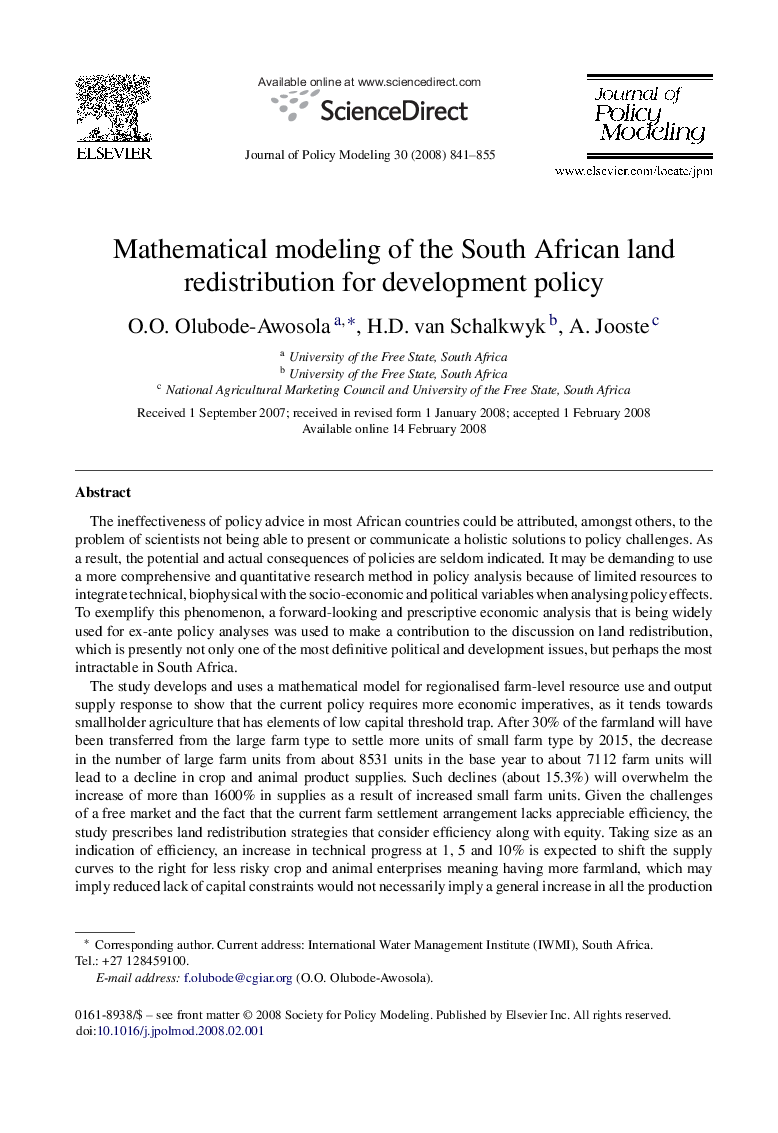| Article ID | Journal | Published Year | Pages | File Type |
|---|---|---|---|---|
| 969433 | Journal of Policy Modeling | 2008 | 15 Pages |
Abstract
The study develops and uses a mathematical model for regionalised farm-level resource use and output supply response to show that the current policy requires more economic imperatives, as it tends towards smallholder agriculture that has elements of low capital threshold trap. After 30% of the farmland will have been transferred from the large farm type to settle more units of small farm type by 2015, the decrease in the number of large farm units from about 8531 units in the base year to about 7112 farm units will lead to a decline in crop and animal product supplies. Such declines (about 15.3%) will overwhelm the increase of more than 1600% in supplies as a result of increased small farm units. Given the challenges of a free market and the fact that the current farm settlement arrangement lacks appreciable efficiency, the study prescribes land redistribution strategies that consider efficiency along with equity. Taking size as an indication of efficiency, an increase in technical progress at 1, 5 and 10% is expected to shift the supply curves to the right for less risky crop and animal enterprises meaning having more farmland, which may imply reduced lack of capital constraints would not necessarily imply a general increase in all the production activities because of relative risks in revenues. The study however, suggests that agricultural land can act as a safety net for the poor, where the efficiency argument does not hold.
Keywords
Related Topics
Social Sciences and Humanities
Economics, Econometrics and Finance
Economics and Econometrics
Authors
O.O. Olubode-Awosola, H.D. van Schalkwyk, A. Jooste,
